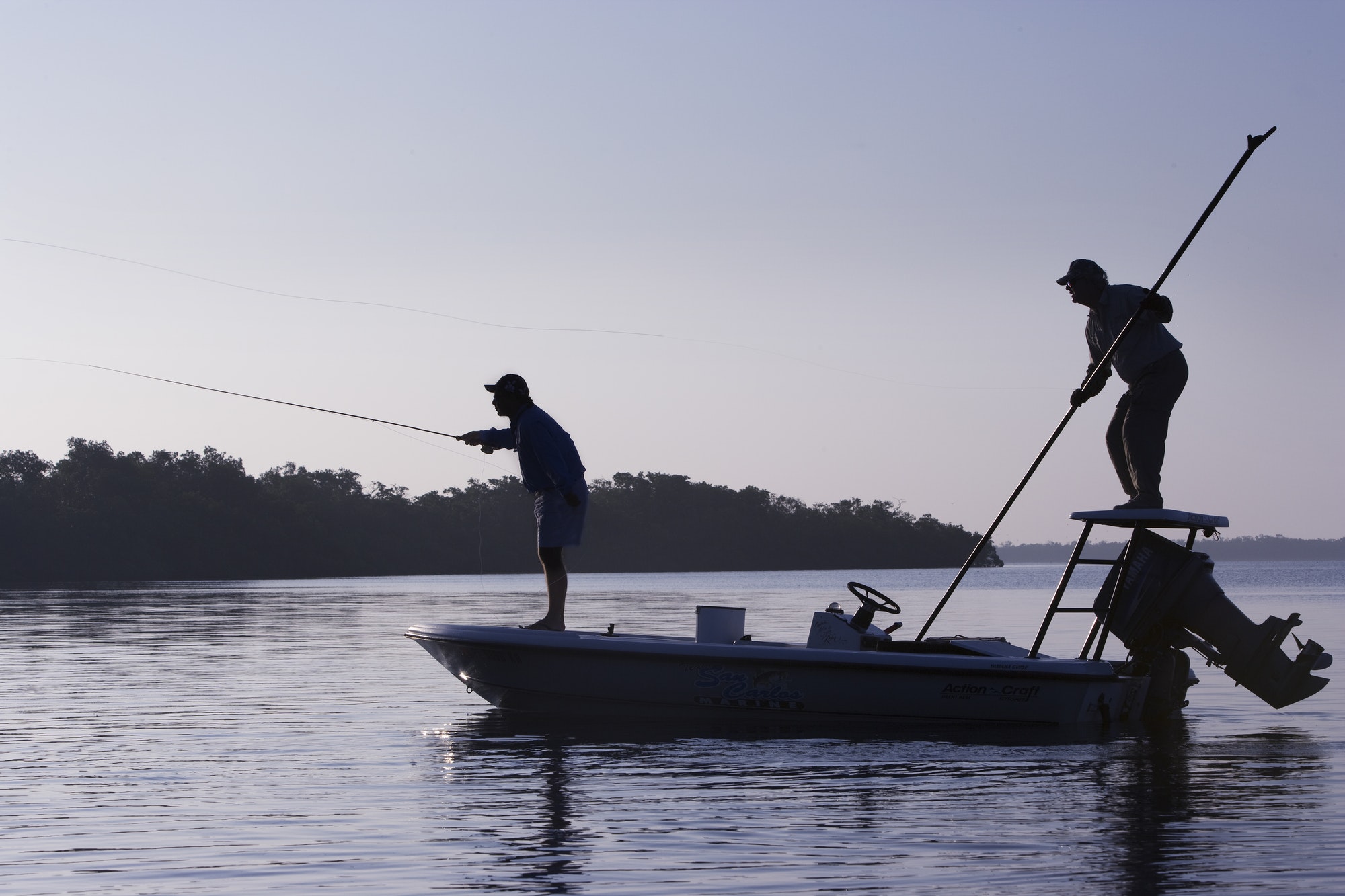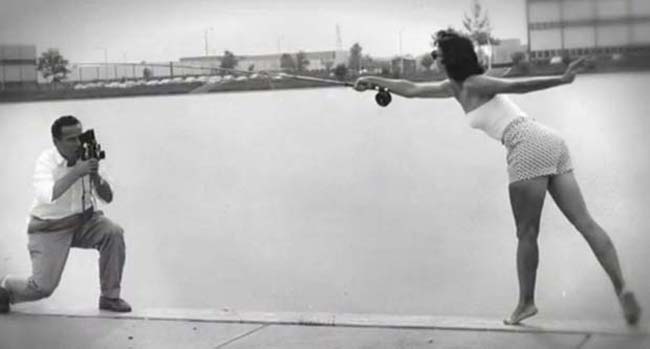
A silhouette of a fly fisherman casting for redfish from a flats boat in the Florida Keys.
Rethink the basics of spey casting and make its foundation your new and expanded capabilities as fly fisher
By Skip Clement
If one wanted to be an all-around fly caster, cast well in tight spots without the menace backcasts hanging up flies in forests, bushes, mangroves, and canyoned walls, the solution has already been gifted to us by the Brits of yore. They taught the world that slinging 18-foot wood branches called fly rods delivered woven silk lines named fly lines with feathers, called flies, attached at the terminal end of things could catch Atlantic salmon in Scottish highlands.
In the 19th century and into the early 20th century, God only meant for gentlemen of means to participate in the sport of catching Atlantic salmon with a fly rod, line, and feathers
Note: Materials used for building fly rods, back-in-the-day, ranged from ash, or willow for the butts and hickory or hazel for tops, together with the standard whalebone extension.
Today, we cling to the sport of fly fishing for salmons, Atlantic and Pacific, in the old way but use superior everything concerning equipage and materials technologies. We still call it spey casting, but it’s a better and significantly modified version of the origin that called for the use of wooden rods up to 18-feet long. The rods were made of flexible hardwoods like ash, or willow for the butts and hickory or hazel for tops, together with extensions made of whalebone.
When shorter fly rods made their mark, 10-feet and shorter, the initial “Belgian Cast” was the first to capture attention by winning distance casting events in Europe. We “Yanks” followed with the double-haul, which overcame the limits of that European cast when deploying shorter fly rods.
Then came Bob Meiser‘s contribution called the “Switch Rods.” Switch rods are slightly less than 10-feet but not limited to that. Meisner’s rods incorporated an extended handle, familiar to spey anglers, but the standout feature of Meisner’s 9’9″ fly rods were they could be cast conventionally and effectively use the double-haul.
The perils of the double-haul can be a bridge too far
Lost along the way, thousands of anglers choosing the road more easily traveled by using the spinning rod or bait casting rods and treble hooks. All because of the act of double hauling a bridge too far – a practice of delivering flies that is counter-intuitive and requires athleticism if not pure unadulterated practice, practice, and more practice. An entry fee few are willing to make to become excellent fly fishers.
But does it have to be the double haul at all?
No, for spinmeisters and bait chuckers, fly fishing is a turn-off. And for other men and women of goodwill, they lose out on the joys of being one with the water and surrounding elements that fly fishing seems to amplify for many. But more importantly, anglers with newfound disabilities of age and its inevitable loss of limber, anglers with upper limb injuries, arthritis, and even dismemberment find overhand casting, double-hauling, a physical impossibility, or task too painful.
However, a vastly overlooked casting technique reduces the discomfort of overhand casting simply for being older and less agile or having an issue with the double-haul itself. The well-known Roll Cast and Dynamic Cast are intuitive casts and lead to spey techniques that are intuitive and easily muscle-memory imprinted.
Watch the following video and see how easy it is to roll and dynamic cast and that the investment in dollars is ZERO






